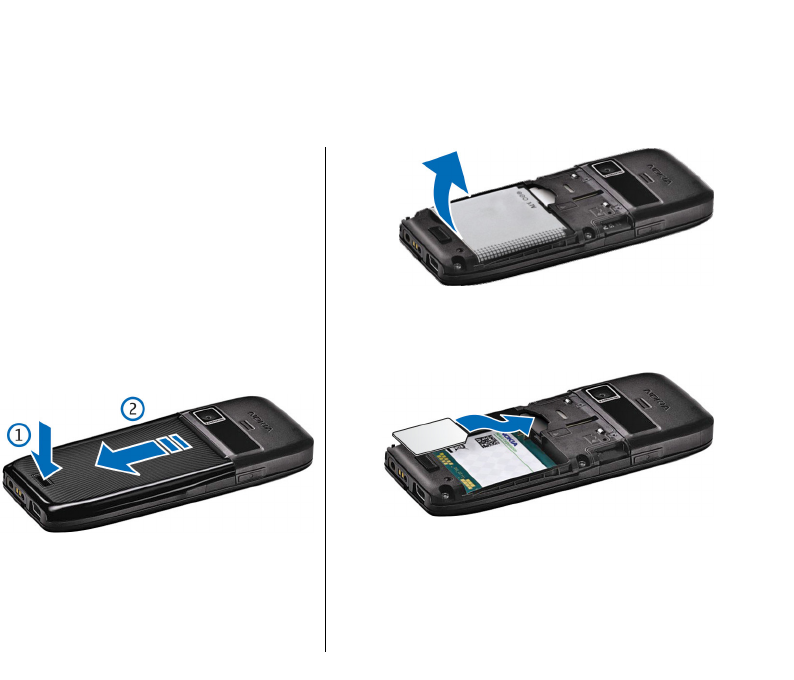
Get started
Model number: Nokia E51-1.
Hereinafter referred to as Nokia E51.
Insert the SIM card and
battery
For availability and information on using SIM card
services, contact your SIM card vendor. This may be the
service provider or other vendor.
1. With the back of the device facing you, press the
release button (1) and slide the back cover off (2).
2. If the battery is inserted, lift the battery in the
direction of the arrow to remove it.
3. Insert the SIM card. Make sure that the contact area
on the card is facing the connectors on the device
and that the bevelled corner is facing the top of the
device.
4. Insert the battery. Align the contacts of the battery
with the corresponding connectors on the battery
compartment and insert in the direction of the
arrow.
13
Get started
